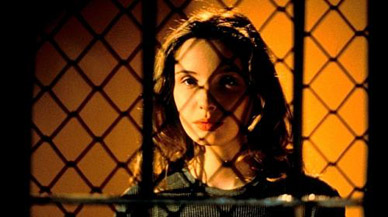|
|
Chapter Two - Three Colors: WhiteBy Brett BeachNovember 24, 2009
I have also watched his monumental ten-part television series The Decalogue, inspired by the Ten Commandments, as well as the original full-length versions of two of those ten installments: A Short Film About Love and A Short Film About Killing. I hope to someday focus on that series as well and its second installment "Thou shalt not take the name of the Lord thy God in vain." That should/could prove to be quite the potential rabble-rouser of a column in 2010. I won't go into much referencing of The Decalogue at this point in time, except to note that I find it successful for many of the same reasons that make the Three Colors films so powerful. More on those in a moment. This is my first Chapter Two to focus on a film that serves as less of a sequel and more of a thematic companion to its predecessor and antecedents. I consider this the final puzzle piece in my crazy-quilt definition of the boundaries of this column while acknowledging that in some cases (in this case?), these columns may be explicitly harder for me to write, and perhaps for the reader to bear with. I have always maintained that the act of a story being told is often as not more interesting to me than the story being told, which may explain my love of tangents and breathless asides as much as anything else can. To put it another way with a cinematic bent - it's not what the film is about, but how it's about what it's about. There may be a small number of "plots" that writers have to work with, but I think the ways in which these stories can be constructed are limitless.
|

|
|
|

|
Friday, November 1, 2024
© 2024 Box Office Prophets, a division of One Of Us, Inc.


